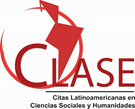A new approach to the structure of cognition
Resumen
The objective of this research is to analyze cognition in the activity of speech and language, discussing the concept "cognitive-communicative activity" to understand and clarify said activity. The dialectical relationship between the bearer and the transmitted object, the controller and the expressed object, as well as the signifier and the signified object are highlighted. The cognitive-communicative process is initiated, carried out and recorded through signs, which are considered the unity of substance and ideal. Therefore, the work argues that these signs are fundamental for the grammar of each language and the various sciences, forming the basis of understanding and communication. Three stages were identified in the cognitive-communicative process, aligned with the ascending hierarchy of cognition. Understanding is described as the conclusion and result of this process, constituting a set of elements and a perception of important signs and relationships. Thus, thinking is situated between emotional and cognitive cognition, based on names and visualizing features and relationships between subjects and cases of truth. Thinking is considered an activity that begins and ends with notions, being the conclusion of the understanding process. For this reason, thinking is formed through general notions and is presented as a reasonable step to obtain results when problems arise.
Keywords:
Cognition, thinking, cognitive-communicative process, language, understanding
RESUMEN
El objetivo de esta investigación es analizar la cognición en la actividad del habla y del lenguaje, discutiendo el concepto "actividad cognitivo-comunicativa" para comprender y clarificar dicha actividad. Se destaca la relación dialéctica entre el portador y el objeto transmitido, el controlador y el objeto expresado, así como el significante y el objeto significado. El proceso cognitivo-comunicativo se inicia, realiza y registra a través de signos, que son considerados la unidad de sustancia e ideal. Por lo tanto, en el trabajo se argumenta que estos signos son fundamentales para la gramática de cada lengua y de las diversas ciencias, formando la base de la comprensión y la comunicación. Se identificaron tres etapas en el proceso cognitivo-comunicativo, alineadas con la jerarquía ascendente de cognición. La comprensión se describe como la conclusión y resultado de este proceso, constituyendo un conjunto de elementos y una percepción de signos y relaciones importantes. Así, el pensamiento se sitúa entre la cognición emocional y cognitiva, basándose en nombres y visualizando rasgos y relaciones entre sujetos y casos de verdad. Se considera el pensamiento como una actividad que comienza y termina con nociones, siendo la conclusión del proceso de comprensión. Por ello el pensamiento se forma a través de nociones generales y se presenta como un paso razonable para obtener resultados ante problemas surgidos.
Palabras clave:
Cognición, pensamiento, proceso cognitivo-comunicativo, lenguaje, comprensión.
Descargas
Publicado
Cómo citar
Número
Sección
Licencia
La editorial "Universo Sur", de la Universidad de Cienfuegos, publica el contenido de la Revista "Universidad y Sociedad" bajo una Licencia Creative Commons Atribución-NoComercial-SinDerivar 4.0 Internacional.
© Podrá reproducirse, de forma parcial o total, el contenido de esta publicación, siempre que se haga de forma literal y se mencione la fuente.










